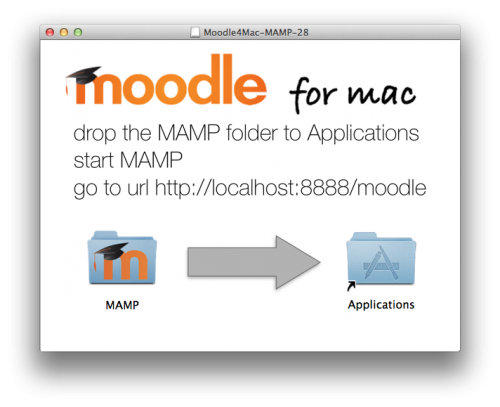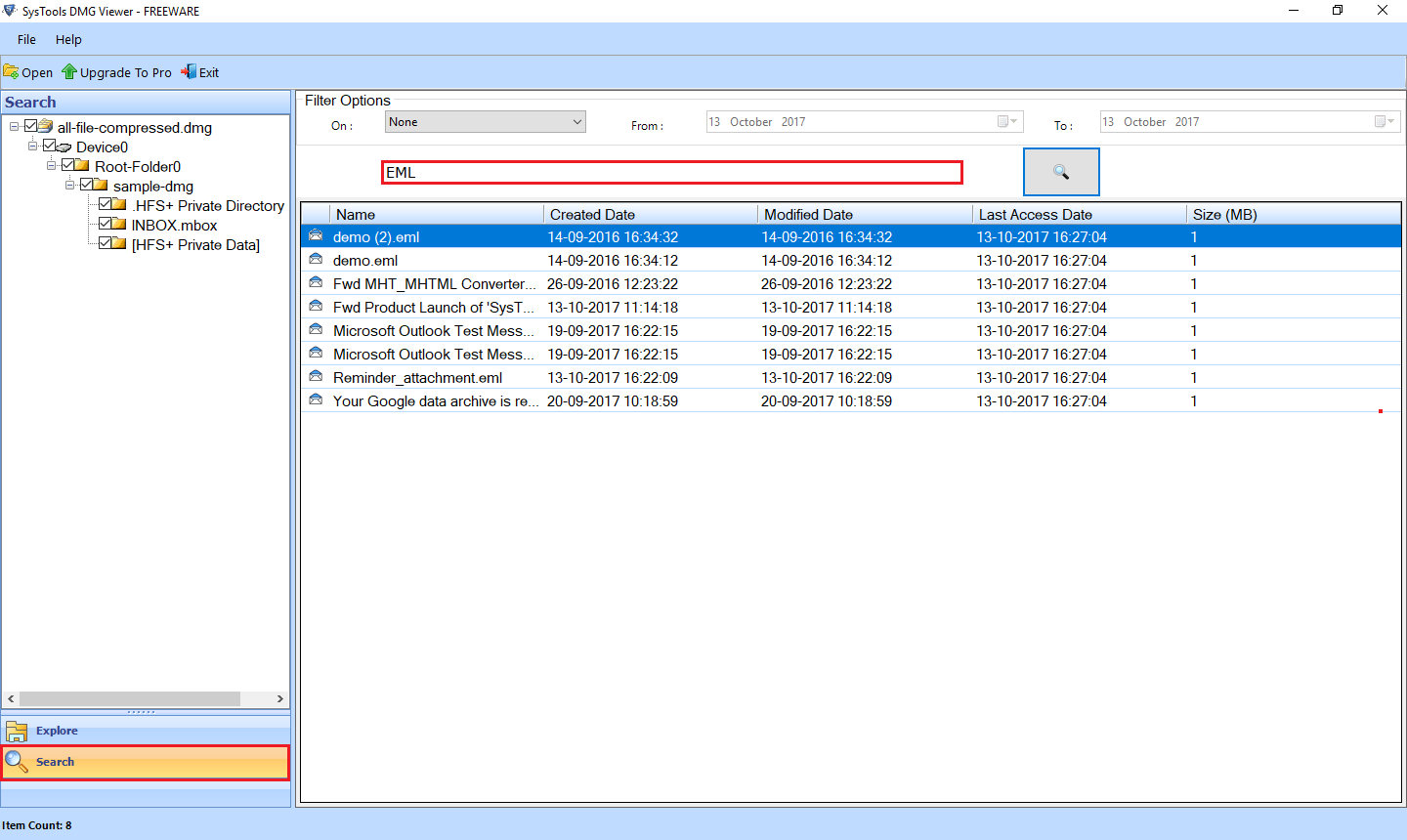Opening A Read Only Dmg
Uncheck 'Read-only' and click OK. Note: This may also need to be done for the folder the DWG file is in, particularly if multiple files all open read-only. Check to see if the root folder is zipped or compressed, and unzip if necessary. Oct 23, 2016 MS Office Word for Mac documents are Read-Only. I have my first Macbook. I have MS Office 365 (2016 without Outlook). I ejected and reconnected my USB device. Now all of the MS Office Word docs on my USB will only open in 'Read Only' format. If you are not signed in Then all documents will be read only. If my reply has helped, mark. DMG File Explorer Software is designed to open, read and explore DMG file on Windows operating system. Users can view DMG files of Mac OS X on Windows without any hassle. The email files like EML, EMLX, Images can be viewed by DMG Viewer tool. Open Mac OS X DMG files on Windows operating system; View DMG Files even in Read-only or Compressed format.
So you’re running Linux on your computer, maybe Ubuntu, and you have some files with the .dmg extension. In this guide, we’re going to talk about how to open, mount, extract, and otherwise get your files from these pesky DMG images. You could always just extract the files on a Mac, then transfer them back to your Linux machine. But if you really want to do this on Linux, without having to rely on Mac, here’s how to do it.
What are DMG image files?
Simply put, it’s a kind of image file. But not an image like a jpeg is an image. DMG is Apple’s proprietary disk image format, native to Mac OS X. There are actually a whole bunch of different types, format and options within this format. There are options for encryption, compression, and different kinds of partition schemes, among others. Unfortunately, this can make things pretty confusing when we’re trying to gain access to the data contained in one of these images.
DMG images are typically a kind of Universal Disk Image Format (UDIF), although there are others, namely NDIF and SPARSE. Although the .dmg file extension is usually used, they can also sometimes have an .img extension, or in some cases no extension at all. Their MIME type is application/x-apple-diskimage.
The HFS/HFS+ (Mac OS Extended/Journaled) file system is typically used in DMGs. However, this isn’t always the case. You may also sometimes find FAT and ExFAT files systems, as well as variations on HFS.
Does my system support DMG?
Ni dmg 2 2 aq structure. Perhaps the biggest hurdle to overcome when trying to work with DMG files is working with the HFS file system (Mac OS Extended). Linux supports HFS through the “hfs” and “hfsplus” kernel modules.
There’s an easy way to test if your system has these kernel modules. Plug in a USB drive formatted with the Mac OS Extended file system. If your particular distribution doesn’t have the appropriate modules, you will likely get an error message. On Ubuntu, you’ll get a popup window declaring “Ubuntu: Unable to mount
Alternatively, we can see if the kernel module files are present with find:

We want to see two files: “hfs.ko” and “hfsplus.ko”. If find doesn’t return these files, your system probably doesn’t support HFS.
You could also try “modinfo”: modinfo hfs and modinfo hfsplus should return something like:
If you get 'modinfo: ERROR: Module hfsplus not found' your system doesn’t have these modules.
Not all Linux kernels and distributions support HFS. This is especially the case for certain distributions that are a few years old. If you have kernel support for HFS, great! If not, don’t worry. There are still ways to extract data from your DMG files. While it’s nice to have the option to mount the images we’re working with, this is really the only functionality we’re losing without having the hfs and hfsplus modules. The two programs we’re going to use later on (P7ZIP and dmg2img) do not require kernel support to function.
What kinds of DMG images can be opened in Linux?
This guide is about how to open, mount, and extract files from read/write, read only, and compressed DMG image files. The following partition schemes have all been tested with the techniques discussed here.
- Apple Partition Map
- CD/DVD (partitioned)
- CD/DVD (partitioned) with ISO data
- Hard disk
- Master Boot Record Partition Map
- No partition map
This guide does not cover how to handle sparse disk images (.sparseimage), sparse bundle disk images (.sparsebundle), or CD/DVD masters. DMG images with partition scheme types of “CD/DVD” and “GUID Partition Map” do not appear to work with the techniques described here.
Option 1: Mount the DMG
If the Linux distribution you’re on has HFS support in the kernel (Ubuntu 14.04.1 LTS supports it), it’s pretty easy to just mount the DMG image:
We’re using “sudo” because we need root privileges to mount things. The HFS+ file system type is specified with “-t hfsplus”. The “/mnt” at the end of the command specifies where we’re mounting the image.
Unmount the image with sudo umount /mnt
If you get a wrong fs type message like the one below, it means the DMG file is either of an unsupported type, or it’s compressed. Unsupported images include sparse images, sparse disk bundles, CD/DVD masters, and images with partition schemes of the CD/DVD or GUID Partition Map types.
Use “file” to learn a little more about the image file:
If you get image.dmg: x86boot sector that means it’s probably using a GUID Partition Map and isn’t supported. This isn’t good, however, it’s also not too terribly common.
What’s more common is to see something like this:
If mounting isn’t working, and this is what you’re seeing with “file image.dmg”, then you’re luck!. Our problems are being caused by compression. Linux doesn’t like to mount compressed DMG images. To get around this little obstacle, we’ll use dmg2img (see below).
Option 2: Use dmg2img for compressed images
So you have a DMG image that you can’t mount because it’s compressed. You’ve done “file compressed_image.dmg” and you got “compressed_image.dmg: bzip2 compressed data”. The fix? That’s easy: use dmg2img to convert it to an uncompressed image. Once you run the image through dmg2img you should be able to mount it no problem.
Don’t have dmg2img? It’s usually pretty easy to get using your distribution’s package management. On Ubuntu, you’d do:
Using dmg2img isn’t very difficult. Type “dmg2img” into the command line followed by the name of the DMG file you want to decompress. The Mac OS X version of Firefox is a good example of a compressed DMG file.
Now mount the resulting .img file:
Option 3: Extract DMG contents with P7ZIP
How To Open Dmg File On Mac
P7ZIP is awesome. It’s the Linux/BSD version of 7-Zip. Check out their SourceForge page here With it you can literally extract files from any kind of image or archive. Just kidding… It doesn’t really work with every format conceivable. However, it can handle (in alphabetical order): ARJ, CAB, CHM, CPIO, CramFS, DEB, DMG, FAT, HFS, ISO, LZH, LZMA, MBR, MSI, NSIS, NTFS, RAR, RPM, SquashFS, UDF, VHD, WIM, XAR and Z. Impressed? I certainly am!
Installing p7zip is pretty easy using your distribution’s package management system. On Ubuntu with apt-get:
In addition to being able to extract data from compressed and uncompressed images alike, P7ZIP doesn’t require the HFS kernel modules at all. In the example below, we’re going to extract all of the files from “Firefox 33.1.1.dmg”. When we’re done, we’ll have a tidy little folder called “Firefox”.
Invoke P7ZIP to extract archives and images with “7z x”.
Notice that 7z extracted three files: “0.ddm”, “1.Apple_partition_map”, and “2.hfs”. To actually get to the files, we’ll need to run 7z again on “2.hfs”.
We picked “2.hfs” because it was the biggest of the three, meaning it was probably the one with the data. Simple but effective logic. After a few moments, you should have a folder called “Firefox” with all of the files from the original DMG.
Frequently Asked Questions
Listed Commonly Asked Questions and Answers
Will the software extract HTML files on machine?No, the tool only view & open DMG file in Windows 7 / 8 / 10 which gives the facility to preview HTML files within the tool. In order to save you can go for DMG Viewer Pro.
Overview Features of DMG Viewer Tool
- Download & Run DMG Reader Tool
- Browse & Open DMG File on Windows System
- View DMG File data items within Preview Pane
- Allows to Search by Created, Date Modified ,Last Accessed Date, Subject
- Support to View Read-Only & Compressed DMG File
- Support Windows 10, 8, 7 & below versions
 Does the DMG Viewer software allows to View Attachments of EML File ?
Does the DMG Viewer software allows to View Attachments of EML File ?Yes, the DMG viewer software supports to preview the attachments of EML file within DMG File. Go to the preview window by double clicking on the file . Then double click the attachments within the mail & you can preview the attachments.
Supplemental damage ignores DMG Cuts and Next one-to-one attack received will be ineffective(Effect removed on next all-foe all-ally attack), except for Taking 100% less DMGreducing damage taken for all elements.Warning! Only for skill damage and C.A. Roll20 dmg bonus not working. Does not work for! And is not affected by soft capping mechanics.
How can I filter EML files while using Search feature in the tool.I wanted to enlist all EML files within a folder. Do I need to enter the Subject for all EML File?The tool provides you with facility to search files using, Text as well as File type .You can simply select the folders & search 'EML' file to enlist all the EML files within the selected folders.
On which version of Windows Operating System can I Open my DMG Files?This DMG file Viewer program supports all versions of Windows OS & helps to read & open Mac OS X DMG file in Windows 10, 8 and all the below versions
How many DMG Files can I add at a time for extracting email files from it?In single running instance of the tool, the software allows adding single DMG files. You can add multiple DMG files by selecting 'Open Tab' to Add DMG files one by one.